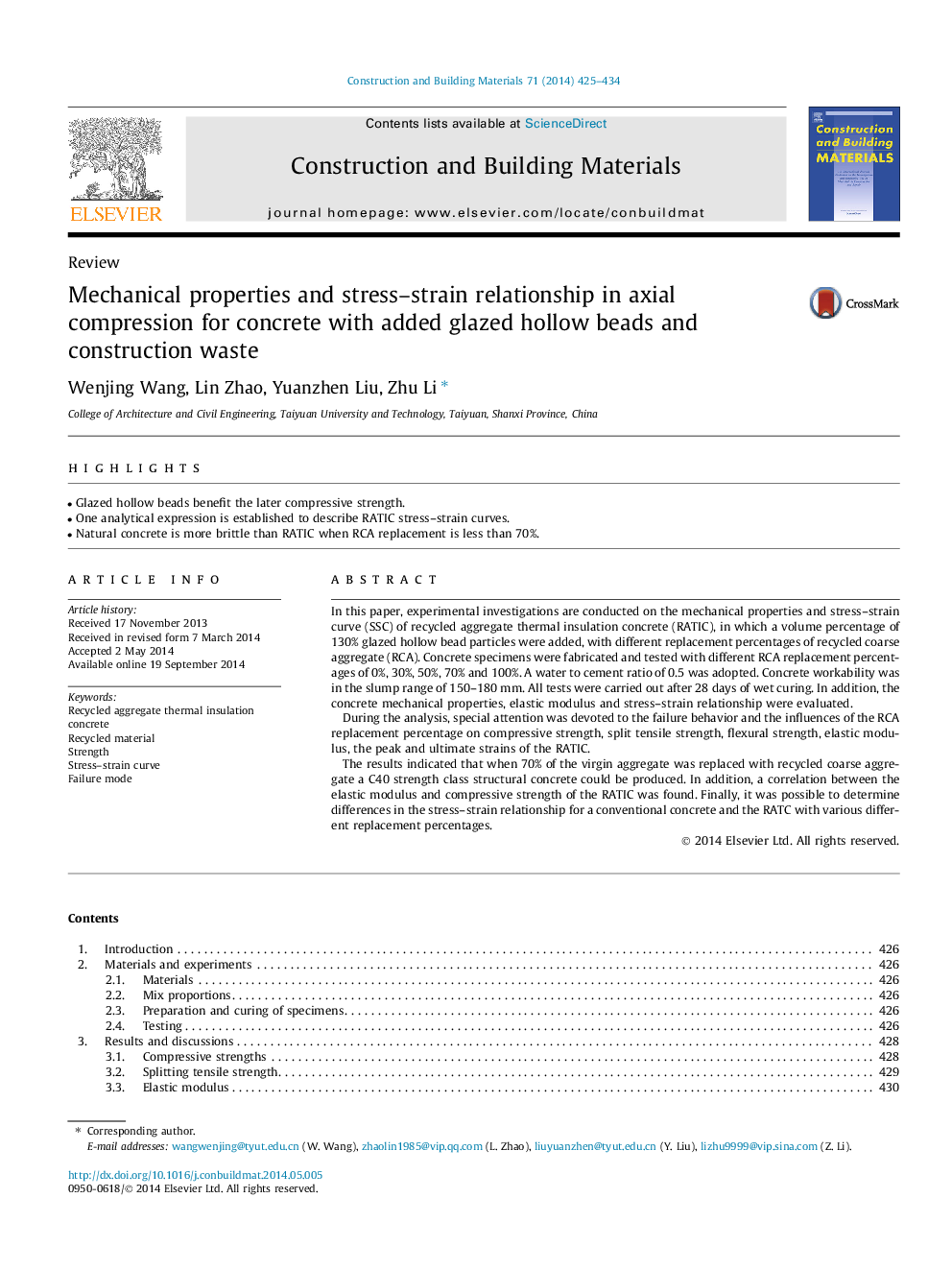| کد مقاله | کد نشریه | سال انتشار | مقاله انگلیسی | نسخه تمام متن |
|---|---|---|---|---|
| 257261 | 503584 | 2014 | 10 صفحه PDF | دانلود رایگان |
• Glazed hollow beads benefit the later compressive strength.
• One analytical expression is established to describe RATIC stress–strain curves.
• Natural concrete is more brittle than RATIC when RCA replacement is less than 70%.
In this paper, experimental investigations are conducted on the mechanical properties and stress–strain curve (SSC) of recycled aggregate thermal insulation concrete (RATIC), in which a volume percentage of 130% glazed hollow bead particles were added, with different replacement percentages of recycled coarse aggregate (RCA). Concrete specimens were fabricated and tested with different RCA replacement percentages of 0%, 30%, 50%, 70% and 100%. A water to cement ratio of 0.5 was adopted. Concrete workability was in the slump range of 150–180 mm. All tests were carried out after 28 days of wet curing. In addition, the concrete mechanical properties, elastic modulus and stress–strain relationship were evaluated.During the analysis, special attention was devoted to the failure behavior and the influences of the RCA replacement percentage on compressive strength, split tensile strength, flexural strength, elastic modulus, the peak and ultimate strains of the RATIC.The results indicated that when 70% of the virgin aggregate was replaced with recycled coarse aggregate a C40 strength class structural concrete could be produced. In addition, a correlation between the elastic modulus and compressive strength of the RATIC was found. Finally, it was possible to determine differences in the stress–strain relationship for a conventional concrete and the RATC with various different replacement percentages.
Journal: Construction and Building Materials - Volume 71, 30 November 2014, Pages 425–434
